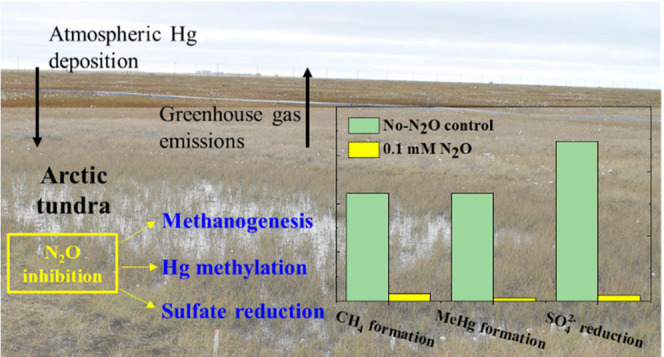- Record: found
- Abstract: found
- Article: found
Inhibition of Methylmercury and Methane Formation by Nitrous Oxide in Arctic Tundra Soil Microcosms

Read this article at
Abstract

Climate warming causes permafrost thaw predicted to increase toxic methylmercury (MeHg) and greenhouse gas [i.e., methane (CH 4), carbon dioxide (CO 2), and nitrous oxide (N 2O)] formation. A microcosm incubation study with Arctic tundra soil over 145 days demonstrates that N 2O at 0.1 and 1 mM markedly inhibited microbial MeHg formation, methanogenesis, and sulfate reduction, while it slightly promoted CO 2 production. Microbial community analyses indicate that N 2O decreased the relative abundances of methanogenic archaea and microbial clades implicated in sulfate reduction and MeHg formation. Following depletion of N 2O, both MeHg formation and sulfate reduction rapidly resumed, whereas CH 4 production remained low, suggesting that N 2O affected susceptible microbial guilds differently. MeHg formation strongly coincided with sulfate reduction, supporting prior reports linking sulfate-reducing bacteria to MeHg formation in the Arctic soil. This research highlights complex biogeochemical interactions in governing MeHg and CH 4 formation and lays the foundation for future mechanistic studies for improved predictive understanding of MeHg and greenhouse gas fluxes from thawing permafrost ecosystems.
Abstract
Nitrous oxide strongly inhibits methylmercury and methane formation in Arctic soil microcosms.
Related collections
Most cited references84
- Record: found
- Abstract: found
- Article: not found
DADA2: High resolution sample inference from Illumina amplicon data
- Record: found
- Abstract: not found
- Article: not found
Cutadapt removes adapter sequences from high-throughput sequencing reads

- Record: found
- Abstract: found
- Article: found